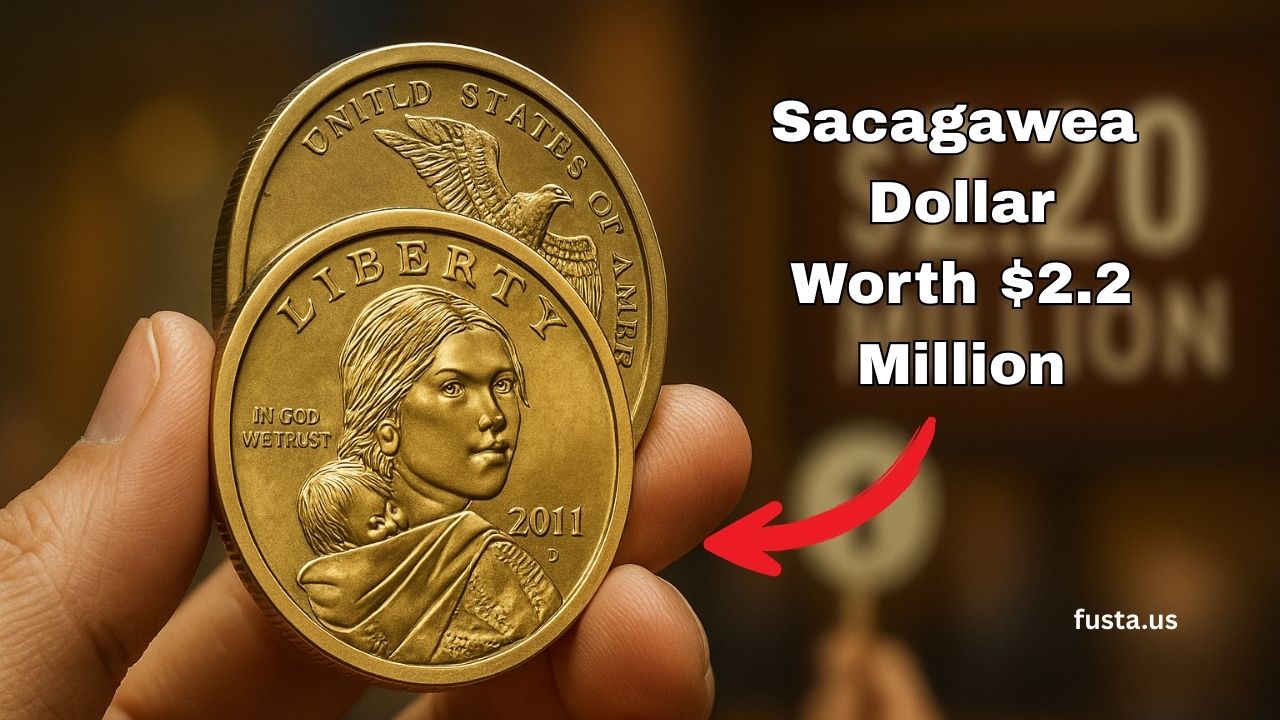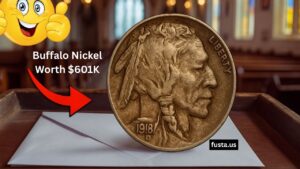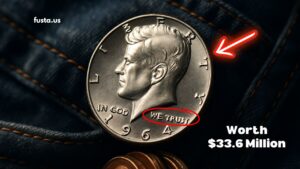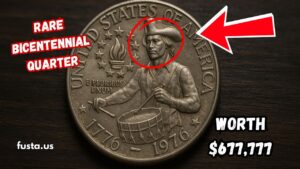In the rarefied world of numismatics, few events spark as much excitement as when a modern coin sells for more than $2 million.
That’s precisely what happened in 2025 when a 2011 Sacagawea Dollar with a reverse rotation error achieved a jaw-dropping $2.2 million at auction.
This remarkable sale highlights how even coins minted for everyday use can become extraordinary collector’s items when they bear the right mistake, in pristine condition, and backed by serious demand.
Why This Sale Broke the Internet
Several compelling factors combined to make this coin a legend overnight:
- Modern yet rare: Unlike famous antique errors, this was a contemporary coin struck just over a decade ago—but incredibly rare due to the error.
- Jaw-dropping rotation error: Its reverse was rotated a full 180 degrees relative to the obverse—an extreme and visually dramatic misalignment.
- Mint condition: The coin remained in flawless state, with no wear or damage—perfect for grading and display.
- Skyrocketing demand: A bidding frenzy erupted among top collectors, driving the price into seven-figure territory.
Understanding the Reverse Rotation Error
A reverse rotation error occurs when the reverse side of the coin is struck improperly, such that when you flip the coin top-to-bottom, one side appears inverted.
This happens when the reverse die is misaligned or rotated in the die setup.
In this extraordinary case, the reverse of the 2011 Sacagawea Dollar was rotated a full 180 degrees relative to the obverse—a rare and highly coveted error that greatly increased its collectible value.
The 2011 Sacagawea Dollar — Why It Matters
Introduced in 2000, the Sacagawea Dollar honored the Shoshone woman Sacagawea, a key guide during the Lewis and Clark expedition.
By 2011, it had become part of the Native American $1 Coin Program, featuring changing reverse designs celebrating Native American heritage.
The 2011 edition depicted the Wampanoag Treaty of 1621, a symbolic tribute to early cooperation between indigenous peoples and settlers.
While millions of these coins were minted, few stand out—making this reverse rotation error vastly unique.
At a Glance- The Error Coin’s Highlights
| Feature | Details |
|---|---|
| Coin Type | 2011 Sacagawea Dollar (Wampanoag Treaty design) |
| Error Type | Reverse Rotation (180°) |
| Condition | Mint State—pristine, uncirculated |
| Auction Price | $2.2 million |
| Significance | Rare modern error; one-of-a-kind; attracted intense collector demand. |
What This Sale Means for Collectors
- Error coins still reign supreme
Even in the 21st century, minting mistakes make modern coins tremendously valuable. - Rarity is everything
Though many Sacagawea Dollars exist, this error may be one of only a few—or even the only—examples of its type. - Condition amplifies value
A high-grade, flawless coin exponentially magnifies desirability, and in this case, the perfect condition helped push the price into the millions. - Modern history in a pocket-sized format
This auction proves that even contemporary coins—if rare enough—can become historic artifacts overnight.
The 2011 Sacagawea Dollar with its dramatic reverse rotation error is a compelling reminder that even common coins can become legendary collectible treasures under the right circumstances.
Its $2.2 million sale isn’t just a record—it’s a testament to the thrill of discovery, the passion of collectors, and the enduring value of minting errors.
If you come across a coin that looks “off,” it may just be worth more than its face value—so never overlook even the most seemingly ordinary finds.
FAQs
What is the Sacagawea Dollar?
The Sacagawea Dollar is a U.S. one-dollar coin introduced in 2000, featuring the likeness of Sacagawea, the Native American guide of the Lewis and Clark expedition. In 2011, it carried the Wampanoag Treaty design on the reverse.
What does a reverse rotation error mean?
A reverse rotation error happens when the back of the coin is struck rotated relative to the front—so flipping the coin vertically makes the reverse appear upside down. In this case, the rotation was a full 180 degrees.
Can modern coins really sell for millions?
Yes. As this 2011 error shows, modern coins—when both extremely rare and in pristine condition—can fetch multi-million-dollar prices at auction when serious collectors compete.




